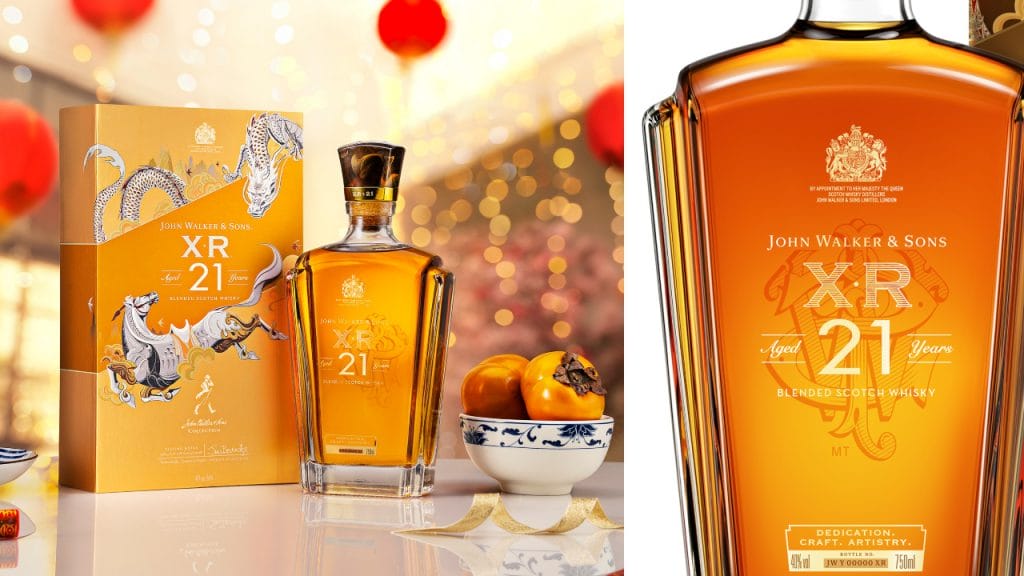There is an art to choosing the perfect gift. The ideal gift not only makes a statement and leaves an impression, but also provides a meaningful experience to the receiver with as few impositions as possible. Fine spirits, such as whisky, are a safe and popular choice for this reason. Not only can they be rare, precious, and highly collectible, they are also easy to store, which keeps the receiver’s options open. A bottle of whisky can be opened right away to be shared on the spot, or kept for an occasion down the line. And as for the tasting of it – no matter what has been said or written about the right or wrong way to approach it, taste is subjective, and the receiver can enjoy it in whatever way they please. It is for these reasons that the Johnnie Walker Lunar New Year limited editions of blended Scotch whiskies have long been a gifting favourite. The name recognition is a bonus – those in the know, and even those who do not, will understand its meaning and significance.

In keeping with the current season of gifting, the brand has prepared a commemorative set of Johnnie Walker Lunar New Year limited editions, consisting of three of its more exclusive expressions. Each of them has been decorated by Shan Jiang, the London-based, Shanghai-born illustrator, whose versatile, colourful style draws from varied inspirations from comic art, Bauhaus design, and traditional Chinese painting. The latter is especially evident in these limited editions, though reinterpreted in a modern, graphical way. The vibrant artwork on the boxes and labels of these limited editions will forever be a call-back to the Lunar New Year of 2022.
The first of Johnnie Walker Lunar New Year limited editions is an old favourite: Johnnie Walker Blue Label. Famous for being the upper echelon of the brand’s core range, Blue is an exercise in exclusivity: only one in 10,000 casks from Johnnie Walker’s immense stocks are deemed good enough to be included. The blend is built on some iconic Speyside and Highland distilleries, including Cardhu, Clynelish, and Benrinnes, with some Islay representation for its smoky touch. A ghost distillery or two lurks within the mix as well. The result is a velvety blend, with fruit, spice, and a gentle smokiness that lingers for a long time. The artwork for the Lunar New Year limited edition features the tiger, which is fitting for the year. Depicted soaring above the clouds, it expresses the power and strength of the tiger ascending to new heights.

The second is John Walker & Sons King George V, which is the first of the two historically inspired John Walker & Sons whiskies to participate. It is so named for the British monarch who was the first to grant the brand a royal warrant in 1934. An exercise in rarity, this blend includes malts from the long-closed and mythically valued Port Ellen, from which it draws its pronounced sweet smokiness. A core of whiskies from Speyside and the Highlands adds a rice spice and dried fruit flavours. The artwork depicts the Bai Ze, a mythical creature said to only appear when a wise emperor rules, and is said to stand for virtuousness and nobility, and to be a great exorciser of evil. For this Lunar New Year limited edition, a splash of red has been added to the label on the neck of the bottle.

Finally, the Johnnie Walker Lunar New Year limited edition also includes the John Walker & Sons XR 21. It was created to honour the occasion of the knighthood of Alexander Walker II in 1920; the grandson of founder John Walker, he oversaw the brand’s whisky-making at the time. The XR 21 was inspired by Sir Alexander’s own handwritten notes; the result is something extremely smooth yet with layers of complexity waiting to be found, and is created via a seldom-used three-stage blending process. Sweet and creamy with a hint of spice, the Speyside distilleries of Mortlach and Cardhu are well-represented, along with the now-closed Port Dundas, and a wide variety of casks representation including first-fill bourbon and sherry contributes to the balanced flavour. The artwork depicts a dragon and a horse, referencing the ‘master of pen and sword’ – the two sides, intellect and decisive action, that are said to be required in a great leader. Specifically, the dragon represents Zhu Ge Liang, a statesman and military strategist during the Three Kingdoms period, and the horse refers to Guan Yu, the general whose actions at the end of the Han dynasty have since passed into legend.




